Types and features of indoor lighting

The importance of indoor lighting in a living space is very high. It fills the house with coziness, creates conditions for visual comfort, helps to place accents in the interior and to implement design ideas. The key to the high-quality performance of these functions is correctly selected lighting devices and type of lighting.
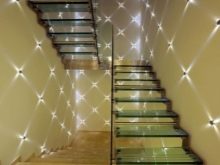
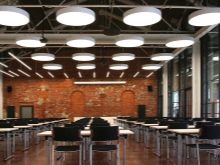
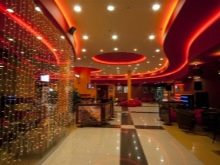
Peculiarities
Indoor lighting is considered to be artificial lighting that contributes to the full functioning and life of everyone living in the house. The second no less important function is the aesthetic load, both of the lighting device itself and the effect it creates. Lighting features depend on its type.
It is customary to distinguish three main ones: functional, decorative, architectural.

Functional, or work, lighting is the most common because no home is complete without artificial light sources when electricity is available. This provides the lighting conditions dictated by the norms, and is a must for any person every day.
Minimum work lighting is provided by ceiling chandeliers, table lamps and local light sources.
When choosing them, an important role is played by the transmittance of the materials from which the shades are made, the brightness and temperature of the lighting, the type of bulbs.
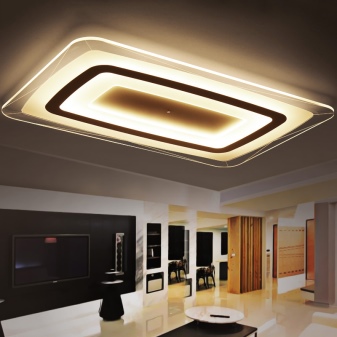
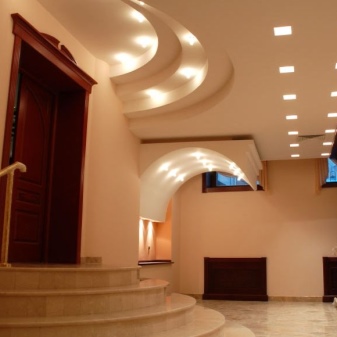
There are 4 types of lamps in total:
- Incandescent lamps. This is the usual version of the “Ilyich's light bulb”, which is gradually becoming obsolete due to its short service life, fragility and high energy consumption. But they still top the list of the cheapest lighting fixtures.
- Halogen or halogen. In terms of quality of lighting, life expectancy and cost, they are one line higher than incandescent bulbs. Small modifications in the lamp device help to improve their performance, namely the presence of a gas bulb that protects the filament from rapid burnout. The same detail makes the light brighter.
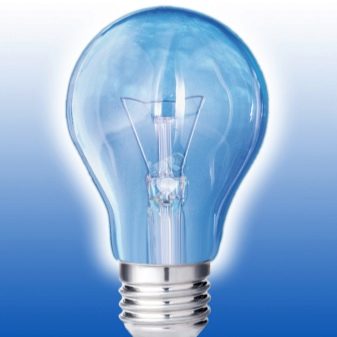
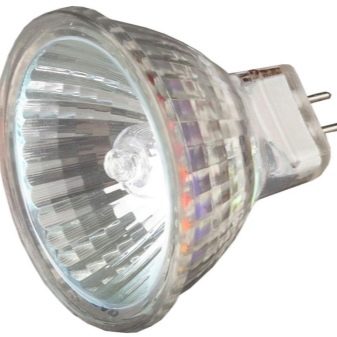
- Luminescent or energy saving. These products are somewhat more complex, and the mechanism of operation is based on the interaction of electrical discharges and mercury vapors. Fluorescent lamps cannot be called safe because of the mercury content, however, when used carefully, they are not harmful, and their energy efficiency is 5 times higher than that of halogen lamps, while energy consumption is 5 times lower. This provides quality lighting and tenfold savings.
- LED or LED lamps. Today they are unsurpassed light sources. LEDs provide correct, uniform illumination in the home, without flickering or heating. They are distinguished by a rich temperature spectrum and a degree of brightness, environmental safety, durability, the lowest energy consumption, and durability.

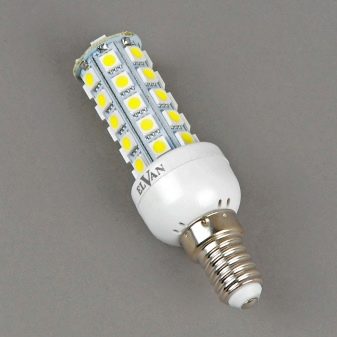
Decorative lighting is responsible for the aesthetic function and has little to do with life support.
When choosing lamps for apartment décor, attention is focused on their shape, color, size, and "decorating" properties for the interior.It can be beautiful sconces, floor lamps under luxurious lampshades, minimalistic blank shades, built-in lighting, lamps on bedside and dressing tables, bedside lamps.
Architectural lighting is the hardest part. It requires some special knowledge and a well-thought-out layout of light sources around the perimeter of an apartment or house. Properly used lighting opens up ample opportunities for "corrective" design, which is designed to smooth out layout flaws (too narrow rooms, too high or low ceilings, non-standard room shape, etc.).
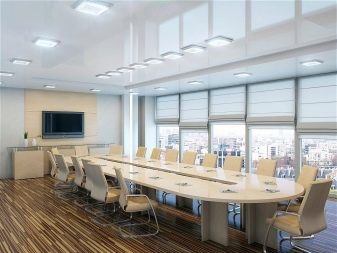

Popular transformation techniques:
- "Raise" the low ceiling with upward beams.
- "Expand" the penthouse bedroom using one-sided or L-shaped arrangement of several lamps in a row.
- "Extend" the room by placing a long row of small lamps in the center of the ceiling.
- Expand the boundaries of the room with reflective and glossy surfaces that diffuse light.
- Zone the room using local lighting above or below the functional areas.
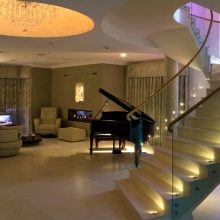
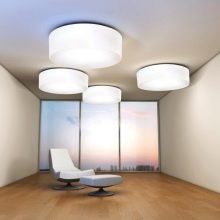
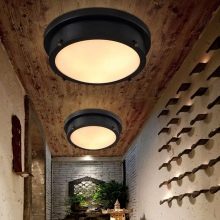
Views
Internal lighting is usually divided into types according to several criteria:
Energy source
In accordance with it, natural (sunlight) and artificial lighting (all types of lamps) are emitted.

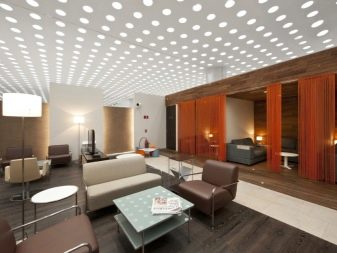
Application area
- General lighting (interior). Its purpose is to create conditions for comfortable living and functioning. As a rule, these are all kinds of chandeliers, linear and ceiling lamps, light sources with a wide spectrum of action.
- Local or local. It is necessary to illuminate functional areas with a large area (stairs, storeroom, corridor). Usually affects only them, without touching the adjacent areas (sconces, wall lamps, small ceiling lamps).
- Working. High-quality lighting over a functional area for a specific purpose (student desk, computer desk, cutting and sewing table, dressing table, lighting for greenery on the windowsill, kitchen area, and others). Built-in and free-standing lamps, lamps, floor lamps.
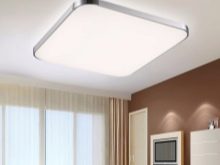
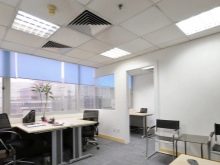
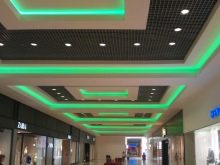
- Reserve (emergency). Necessary when the main light sources suddenly stop working.
- Backlight: niches, steps on stairs, ceilings, floors, furniture, beautiful framing of art objects and expositions, aquariums, architectural structures (spotlights, LED strips).
- Night. This group includes bedside lamps, lamps, floor lighting, stairs and walls, with or without motion sensors, neon decoration for various objects, flexible LED structures.
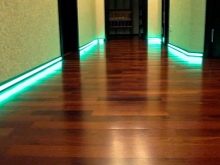
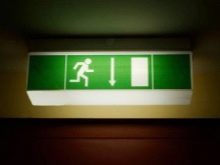
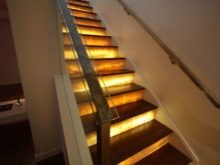
Mounting method
- Mortise or built-in. This is a type of luminaire (spot), the body of which is completely built into the floor, ceiling, wall or false surface (made of plastic or drywall). Spots are rotary and static. Swivel ones make it possible to direct the light in the desired direction;
- Overhead. In appearance, they resemble partially built-in lamps, although in fact they are mounted on flat surfaces. They need a fashionable design, which implies light sources as an element of decor, and those surfaces where installation of a tension or false surface is not available;
- Suspended and suspended lamps are located outside and are accessories in the interior. Both the body and the supply wire belong to their visible part, therefore they are often decorated.
- Independent light sources. These are lamps, floor lamps and other types of lamps that do not need installation at all, but can easily move from place to place.
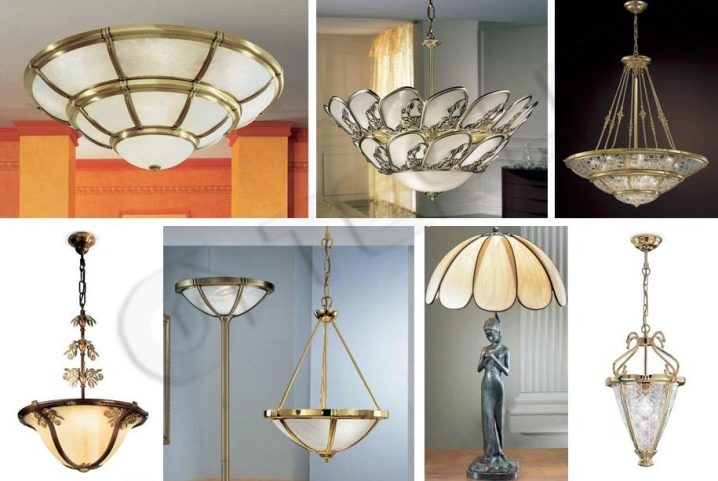
Location
Ceiling (chandeliers and spots), wall (sconces, lamps, ribbons, built-in lamps), floor (built-in lamps and free-standing floor lamps, lamps, floor chandeliers), corner, side.
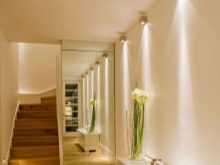
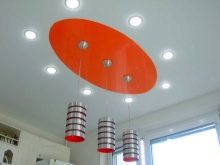

Lighting type
- Directional. This type of lighting involves a directional stream of light to illuminate a surface or area in a room. This gives objects clarity and volume, and there is noticeably more light in the room. Sources of directional lighting - chandeliers and lamps with shades;
- Scattered. This lighting “loses” its sharpness due to the fact that it passes through an obstacle in the form of a plafond or lampshade. The plafond should be made of glass or a light, loose material, this gives a 360-degree diffusion effect. Ideal for general lighting.
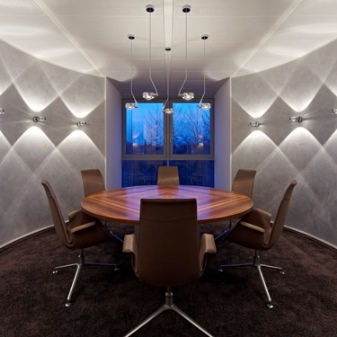
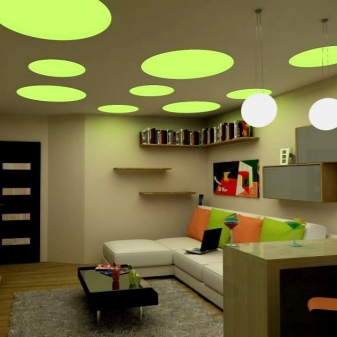
- Reflected. The main role here is played not by direct rays of light, but by their multiple reflections emanating from the surfaces into which the rays of light are directed. This effect can be achieved with small fixtures and reflective or glossy surfaces. Reception is relevant when it is necessary to "expand" the room visually;
- Combined. Original design lighting is created by combining different types of lighting. It is necessary for zoning a room and placing accents.
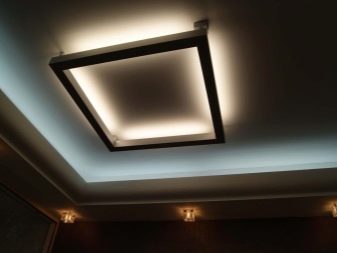

Control type
Manual or mechanical (by pressing the switch), remote, automatic, wireless.
Control options
For many years, there was only one way to turn on and off the light in a room - using a wall switch. After that, to get to another room or to the bed in the bedroom, you had to touch or highlight your path with a mobile phone screen.
Modern technologies have made great strides forward. Nowadays, wall switch modifications are no longer a surprise, and alternative methods of lighting control are gaining more and more popularity.
So, lighting control is divided into local (manual, mechanical) and remote.
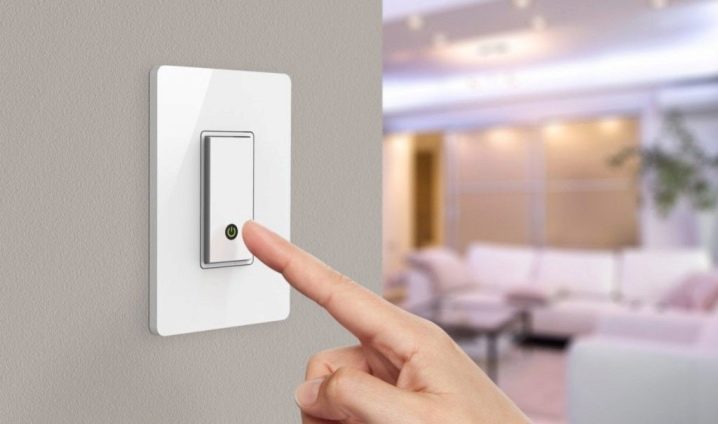
Local or manual control is also subdivided into several types:
- With one-key switch. This is a familiar toggle switch, a change in position of which leads to the fact that the light turns on (toggle switch up) and off (down). One or several lamps connected by contacts can be regulated by such a switch.
- With two or three rocker switches. The principle of operation of this switch is the same as that of a one-key toggle switch, but different keys control different bulbs or lamps. Such a scheme is convenient for a large chandelier in the living room, which has adjustable brightness and lighting mode, or for long corridors with two or three independent lamps.
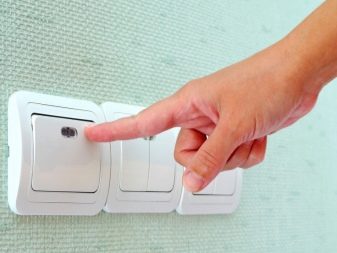
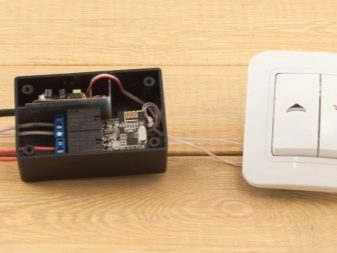
- With pass-through switches. Such toggle switches are somewhat more complicated, but the need for them does not always arise. For example, they may be needed in a house where there is a second floor or mezzanines, so that you can turn on the light downstairs in front of the stairs and turn it off upstairs. The upper and lower switches are dependent on each other, so there is no strictly fixed position of the keys. If from the first the light is turned on upwards, then turned off from the second, the next time the light is turned on on the first one downwards.
- With cross switches. They are even more complicated than walk-throughs, but they make it possible to combine three or more switches in one system to control light from different places in the house. The same capabilities are possessed by a more reliable control system - a bistable electrical relay.
- With motion sensors. Although they are not regulated by simply pressing a switch on the wall, they are local, since they are always triggered in the same zone that needs to be illuminated. Their flawless operation is ensured by a range of 5 to 20 meters, a viewing angle of up to 360 degrees, full automation and the ability to connect to different types of bulbs.
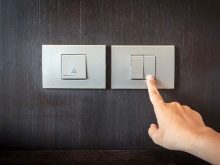
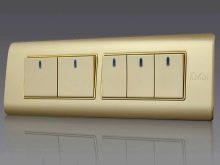

Motion sensors (dimmers) are:
- Infrared. The principle of their work is that the light is turned on due to the reaction of small lenses inside the sensor, fixing infrared radiation, the source of which is a person;
- Microwave. Dimmers of this type recognize movements using the sensitive elements of the device;
- Sound. In some respects, acoustic sensors are more convenient than infrared and microwave ones, since they do not need to be given a signal for operation during the day. The conditioned signal, as a rule, can be selected during the settings: clap of palms, sound of footsteps, sound of a closing door. On the other hand, the infrared sensor will work in any case, and the acoustic one will not be activated if the hands are busy.
- Combined. Such sensors are the best option because they can be configured in any convenient way.
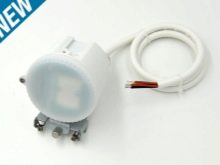
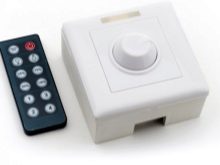

Remote control of interior lighting can be organized in different ways:
- The control is carried out through the switchboard and switching devices. Systems with radio switches are popular here. The radio switch is a touch-sensitive regulator that allows switching lighting networks into the “smart home” system. You can install it anywhere: at the entrance to the house, in the kitchen, next to the bed in the bedroom, and even on the arm of the chair. The radio switch can be easily combined with any other types of control;
- Lighting is wirelessly controlled. These are small smart assistants who make it possible to turn on the light in the morning without getting out from under the blanket, turn it off without interrupting watching a movie on a comfortable sofa, not returning to the room in shoes if they forgot to turn off the light, but do it from the phone. remote control, smartphone.
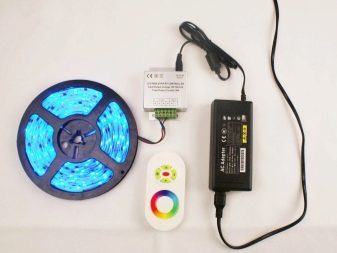
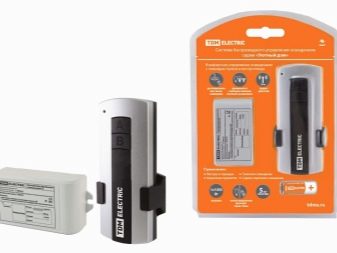
Remote control devices include:
- Remotes. Switching the light with it and adjusting the brightness is no more difficult than clicking channels on a TV without cable;
- Pocket gadgets (smartphones, phones, tablets) on the Android platform. For this operating system, a free Arduino application has been developed that allows you to control lighting and household appliances in the house;
- A computer. He is able to control some of the wifi connections in the house, but a program or application is not enough for this. Power blocks and a USB adapter are required, but it will be possible to control the light not only from the next room, but also from another city.
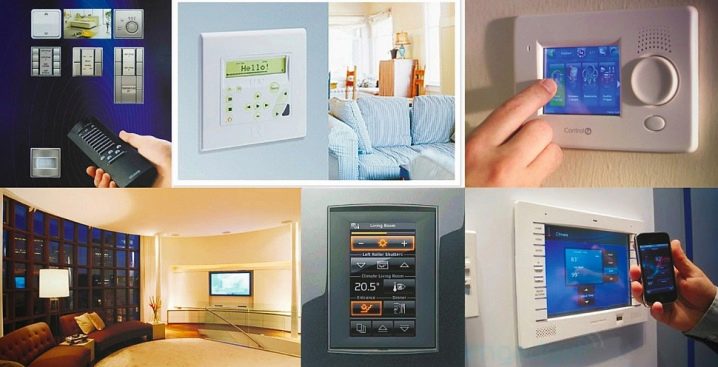
How to choose for the interior?
Choosing indoor lighting fixtures in your home is a technical and creative challenge. To make it easier, design experts recommend relying on the following criteria:
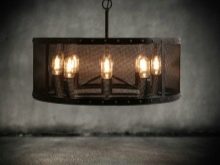
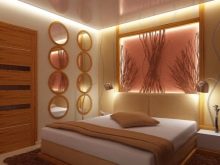
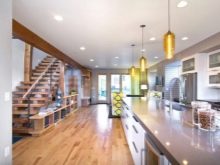
Features of the layout of the premises
The layout is rarely part of the interior in itself, only in those cases when it is specially changed to comply with the canons of a particular style. Indirectly, its features affect the choice of shades and accessories for decorating a room. And lighting as well. It often helps to solve complex design problems in apartments with non-standard layouts.
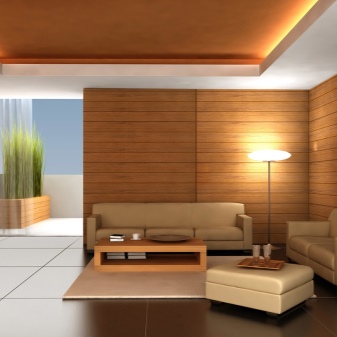
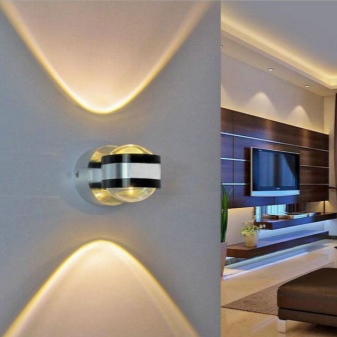
In this case, recessed luminaires are considered a good solution. With their help, directional or diffused lighting is created, which, with the help of the play of light and shadows, makes it possible to visually correct the flaws in the layout. It is relevant for use in rooms that need to be as close as possible to the cherished square shape, for a room with a stretch ceiling, small-sized Khrushchev houses, rooms with low ceilings.
Chandeliers of complex designs with original shades are shown for rooms with high ceilings.
Among the fashion trends are multi-level chandeliers with a large number of shades and loft-style interiors using the upper space of the room for the installation of decorative ceiling beams.
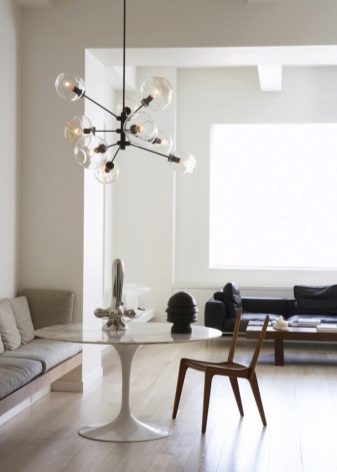
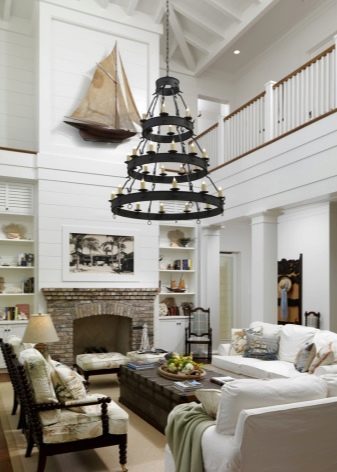
They can accommodate lamps with metal shades, "naked" bulbs, "Edison lamps" and similar in style, crude simple lamps.
The use of the attic is popular in modern design. This is a room with sloping walls and a sloped ceiling, in which it is difficult to install any lighting fixtures, except for spots and linear fixtures.But they make it possible to save space and create a cozy "attic" atmosphere. A current idea for a cool attic floor is the cultivation of a home botanical garden. In this case, large pendant UV lamps for flowers and plants are needed.
Lighting design techniques are essential to optimize the space in the studio and studio apartment. At the same time, they will help to visually enlarge the room and clearly divide it into functional zones.
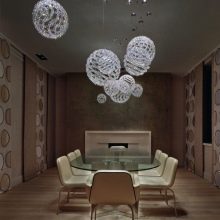
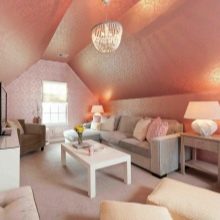
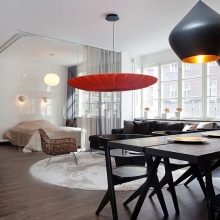
Purpose of rooms
The choice of lighting is influenced by the purpose of the room.
- Living room. In this room, both high-quality general lighting and several local light sources are important. A chandelier for an overhead light can become an interior decoration in a historical style, and if it is minimalism, then it is better to give preference to a group of turning spots. Almost any interior can be made cozy and intimate for friendly or romantic evenings using lamps and floor lamps. Only in one case it will be romantic ruffles and light fabrics, and in the other laconic geometric shapes and monochrome colors.
Backlighting for individual details is also relevant: paintings, windows, skirting boards.
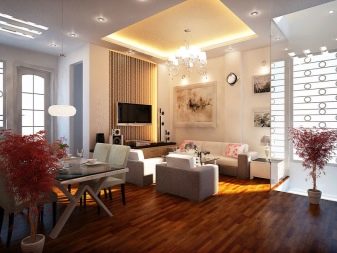
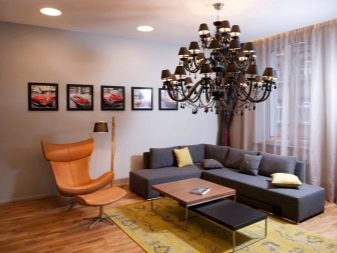
- Bedroom. Overhead and local light are also needed here. It should be of a warm, eye-pleasing spectrum, but not too dull. Lamps with remote control are ideal for the bedroom, because you don't want to get out from under your clothes after reading a book to press the switch!
- Kitchen. General lighting is definitely, and local lighting is necessary in all functional areas. Decorative lamps are no longer needed here, different kinds of lighting will be more ergonomic. In the cooking area, it can be a backlight built into the headset, an LED strip on the wall "apron". And, for example, overhead or mortise lamps of an interesting shape will look great over a bar jay.
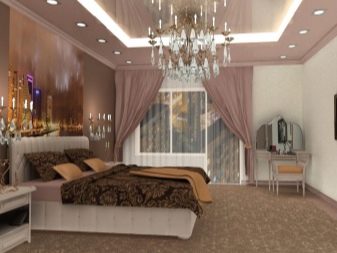

- Children's. The two main criteria for lighting in a child's room are compliance with sanitary standards and ease of control. Natural spectrum LEDs are best suited to local control of a toggle switch or with a simple remote control that allows you to change the daylight of the chandelier to a night light. A desk lamp on your desktop is a must.
- Bathroom. There is no place for bulky lighting fixtures in the bathroom. All of them should be small, well lit, resistant to humidity and temperature extremes. For conventional lamps, a completely enclosed transparent or matte shade is required, which will protect the fragile body from moisture.
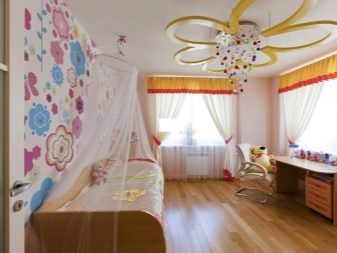
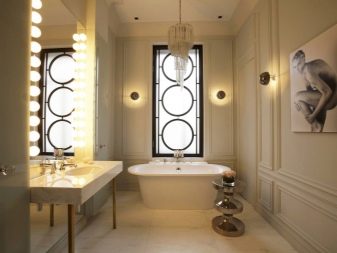
- The corridor. Lighting requirements in corridors, hallways and hallways depend on the size of the room. For a large area, an overhead light and illumination of individual zones are needed; for a small area, one of these options is sufficient.
- Wardrobe. Good lighting is a prerequisite for a dressing room. It is important that it is as close to the natural spectrum as possible, so that the color of the clothes is not distorted, and the reflection in the mirror is reliable. Remote control is only a plus.
- Pantries. In places where things are stored, there should be bright, easily adjustable light. It is important to protect the light bulb with a shade so as not to accidentally break it when removing large, tall or uncomfortable items from a loaded pantry.
Since the light in such rooms is not often switched on, it is enough to use ordinary incandescent or halogen lamps, which are many times cheaper than LEDs for the entire apartment.

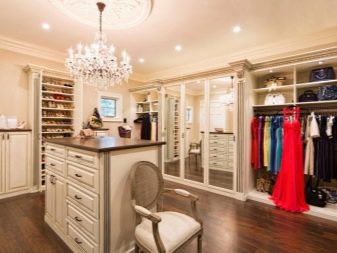
Style and interior design
The characteristics of different styles impose requirements on the brightness of the light, and on the color temperature, and on the appearance of the lighting fixtures.
So, in a modern style popular unusual execution of chandeliers and lamps in plastic, steel, wood, glass, fabric format. New design ideas are appropriate in it, sometimes the most unexpected and crazy ones. The lighting itself is preferably natural, be it minimalism, industrial or provence.
Classic style slightly different rules apply. It is more focused on good quality, high cost, status. Chandeliers and lamps play the role of decoration more than functional items here.
When choosing bulbs for massive Scandinavian or Romanesque chandeliers, or Greek-style wall sconces, use a warm, yellowish light that looks like the glow of a candle in a candlestick and candelabra.

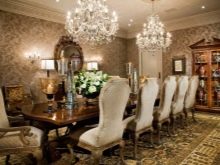
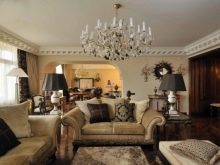
Personal preferences
Designers' recommendations are not immutable rules. You can choose lighting fixtures based on your own taste, ideas of harmony and a sense of comfort. But the prescriptions of doctors on the quality of lighting should not be neglected.
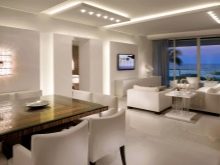
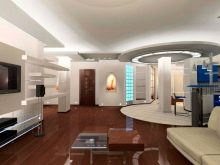
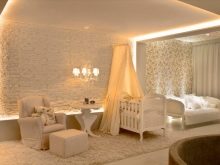
How to conduct and connect?
Conducting interior lighting in an apartment or house is a responsible event.
Connecting wires yourself can harm your health, so the best solution is to contact a specialist. But their services are not cheap, and the larger the area, the higher the price. In order to save money, you can carry out some of the preparatory work yourself.
Lighting is carried out in several stages.
Settlement work

In the course of the work, the required lighting power, the number of bulbs, and the application of the obtained data to the layout of the room are determined.
The calculated power is calculated by the formula: the area of the room is multiplied by 16 W (the constant value of the specific power of the lighting device in the dwelling). There is also an indicator in the formula that denotes the "demand coefficient".
It is equal to one, and this is a fixed value for any room, so you do not need to multiply by it.
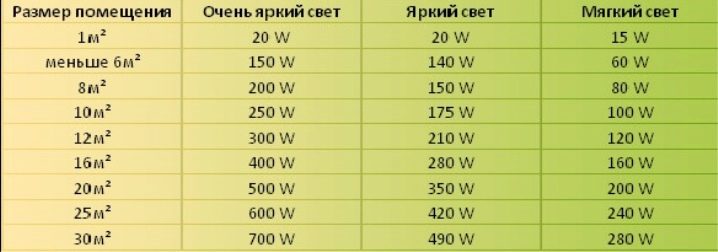
The minimum "room" number of lamps also has its own formula for calculating: divide the area of the room by the power of one light bulb and multiply the resulting number by 16 watts.
An experienced electrician at the same stage calculates the cross-section of the lead-in wire or cable.
After the calculations are completed, you need to make a visual plan for the location of the lamps, switches and wiring. The scheme is applied to the floor plan with an accuracy of up to a centimeter on a reduced scale. The layout should be detailed so that even small light sources can be marked on it.
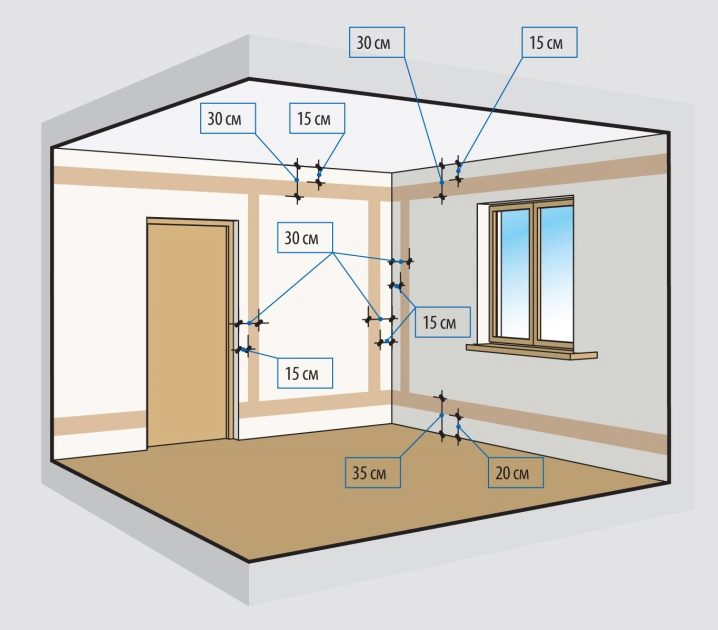
It includes:
- All types of lighting fixtures, except for independent ones.
- The route for carrying electrical cables along the walls.
- The location where the junction box will be installed.
- Location of switches. When choosing pass-through switches, it is important to consider the features of the wiring so that the light can be turned on and off from both. A common mistake of beginners is that they incorrectly connect the contacts, as a result, it turns out that you can turn off the light only with the toggle switch with which it was turned on.

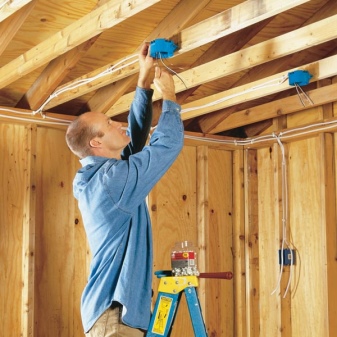
Preparing for installation
When the project is finished, it's time to buy supplies and tools. This stage includes the selection of bulbs by type, size, shape, brightness and color temperature, and suitable fixtures and chandeliers.
You also need to decide what type of installation will be used, this directly affects the choice of luminaire models, a set of switches or a remote control device for lighting.
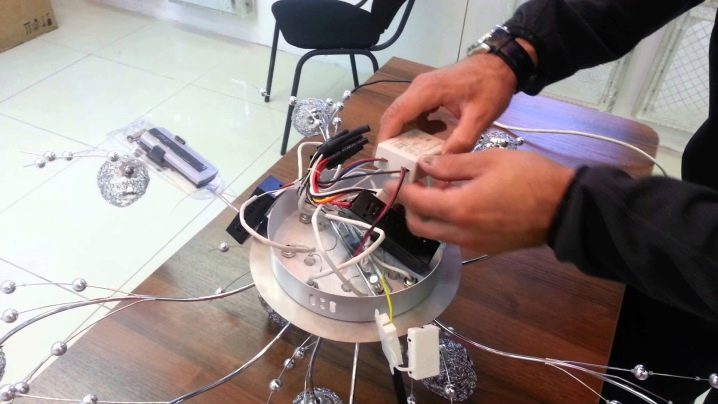
Mounting
The third stage is the installation itself. Performing it yourself without special training is dangerous to life and health.
It is recommended to contact a specialist, while observing two important rules:
- Saving on material means saving on safety. All consumables must be of high quality and in sufficient quantity.
- Workers without experience are not suitable for performing design and electrical installation work, since this is one of the most difficult types of installation in repair. Also, you should not trust the safety of your home to novice workers and those who are guided by the standards of the last century. The electrical system in the house must be modern and flawless.
In the presence of shortcomings, at best, it will cost money to call a more competent employee, and at worst, the health of one of the family members. And the first to be at risk are children.
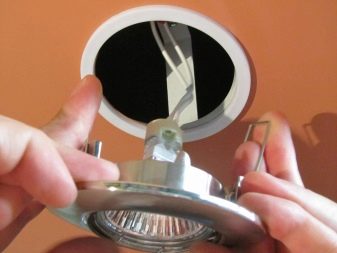

What should be the brightness?
Brighter doesn't mean better. This is the golden rule when choosing lighting in your home. It is not enough to choose the brightest bulbs to solve the problem of high-quality lighting. However, too dim lighting also negatively affects the body. It causes drowsiness and impairs vision and mental health.
Incorrect illumination in children's rooms and workrooms, where there is an increased load on the eyes, is especially dangerous.
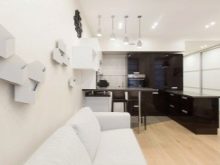


The building code, which is based on the recommendations of doctors, indicates the strength of the lighting in the suites.
For each zone in the room, its own optimal indicators have been developed:
- Attic and basements, as well as non-residential attic, do not need bright light. Their norm is 20 Lx;
- Adjacent bathroom, separate toilet and bath or sauna need 50 Lx. At the same time, this is the minimum value for the bathroom, and for cosmetic procedures (shaving, applying masks and makeup), twice as much is required - 100 Lx;
- Also, 50 Lx is the norm for corridors, hallways and halls;
- Dressing room or lighting inside a spacious wardrobe - 75 Lx;
- In the pool or bath, normal lighting is 100 lux;
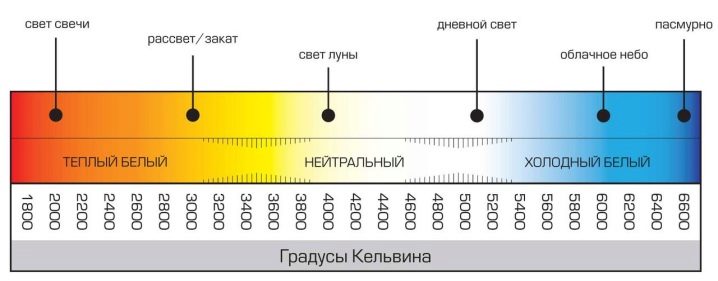
- Bedroom - 150 Lx, provided that there are less bright light sources in the form of a bedside lamp or a lamp;
- Kitchen and bar area - 150 Lx;
- Children's room - no more than 250 and no less than 200 Lx;
- An office with a computer - 300 Lx. At the same time, it is recommended to increase the passability of natural light;
- The office in which drawing, cutting, sewing, design is carried out - up to 500 lux.
In order not to get confused in different indicators (Lux, Watt, Lumen), characterizing the luminous flux, you can use the formula. It helps to translate some meanings into others, more convenient and familiar.
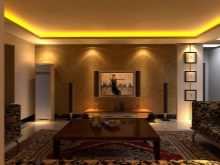
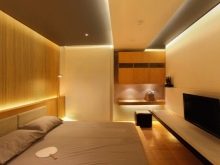
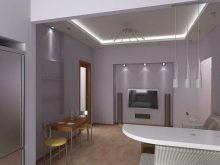
So, 1 Lux is 1 Lumen per 1 square meter of the room. To calculate the illumination rate of each room, you need to multiply the figure from the SNiP table by the area of this room, and then divide the resulting amount by the number indicated in the "luminous flux" column on the package with the lamp. The resulting number means the required number of bulbs per room.
There is also another approach. The derivative of the SNiP norm for the area of the room can be divided by the number of bulbs that you want to install in a lamp or in a chandelier. The resulting number should be indicated on the light bulb packaging. The value can be rounded. For example, there are no lamps with a luminous flux of 245 or 255 lm, so you can choose the closest value of 250 lm.
For different types of luminaires, different rules apply, but they are all based on SNiP data.
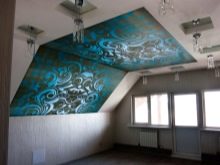
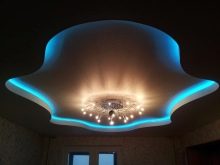

How to improve?
Sometimes it is not enough to carefully plan the interior lighting scheme in the house. Even well-placed lighting elements in the interior may not cope with their task. As a rule, this happens in the autumn-winter deficit of the sun, or in case of an unsuccessful location of the apartment, when the windows overlook the neighboring house and literally run into its wall.
There are several techniques for improving lighting in an apartment:
- Give more access to natural light. It is not necessary to resort to radical methods such as arranging additional window openings or increasing existing ones; you can beat the window design and the interior filling of the room. First of all, it is worth removing all dense and heavy curtains from the windows, replacing them with vertical blinds with tulle, light translucent curtains or roller shutters (horizontal blinds, Roman blinds, Austrian, corrugated, English).
- The second technique is the use of transparent and translucent partitions instead of blank walls.They can be made of dense frosted glass, then nothing will be visible through them, and the sound insulation will remain at the level, but the material will still transmit a lot of light, which will add airiness and lightness to the room.
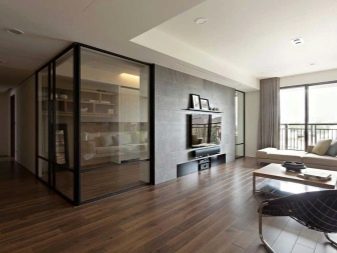
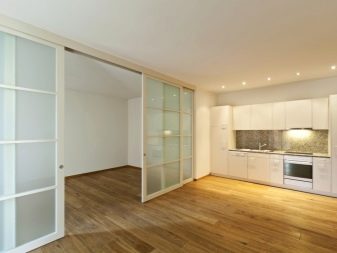
- Use quality lamps with a light spectrum that is pleasing to the eye. Imitation of natural light always seems to be the best option, but natural light is white, and when asked what color the sun is, everyone answers - yellow. The eyes are more accustomed to warm, slightly yellowish shades. In dark, dull apartments, especially in the autumn-winter period, light with a slight yellowness is relevant due to the fact that it creates a warm, cozy atmosphere and resembles sunlight.
- Choose modern types of lamps, smart mechanisms and dimmers for lighting. With their help, it is much easier to adjust the desired lighting depending on the time of day and time of year.
- Use in interior design materials with glossy and reflective surfaces that scatter light (PVC, siding, glass, smooth wallpaper, ceramic tiles, mirrors, chrome) and light, warm colors (white, beige, peach, milky, pastel shades, natural natural palette ).
- Choose shades and lampshades of the "correct" shape, translucent, thin-walled, with reflectors inside.
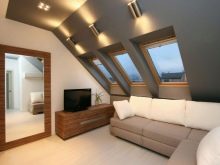
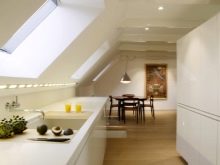
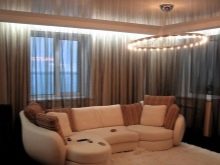
Successful examples and options
Interesting solutions for arranging lighting in an apartment can be seen in ready-made design projects:
- Use non-trivial light sources. These are chandeliers, lampshades, lampshades, unusual in shape and material, and LED strip, which gives great opportunities for decoration, and various linear lamps, duralights and spots;

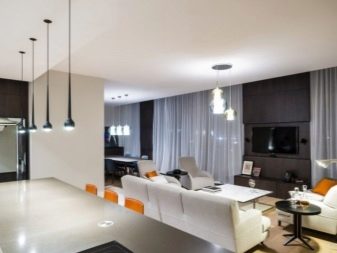
- Reconsider the places for the installation of lighting devices. Maybe the bathroom lacked a full-fledged chandelier all the time, or it was worth highlighting the podium for the bed in the bedroom for a long time.
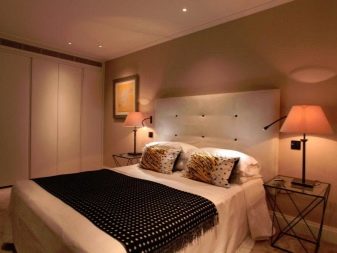
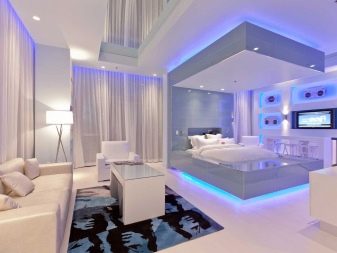
- Don't be limited to natural light. In some rooms, yellow, red, green or blue lamps will be appropriate;

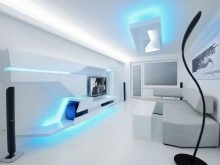
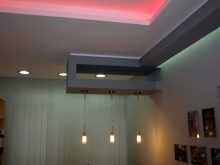
- Use multi-level (multi-layer) lighting: overhead light, lamps and spotlights;
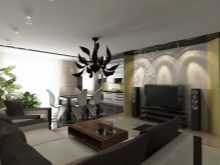
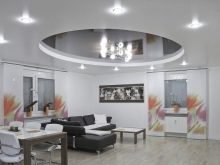

- Direct backlight to accent objects. In this case, the lighting should clearly fall on a picture, vase, or other object, "snatching" it out of the twilight. The result is a beautiful "theatrical" effect.
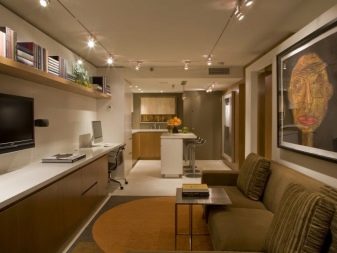
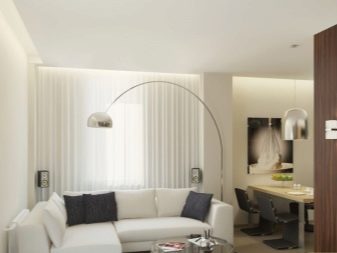
You will learn more about the types and features of indoor lighting in the following video.













The comment was sent successfully.